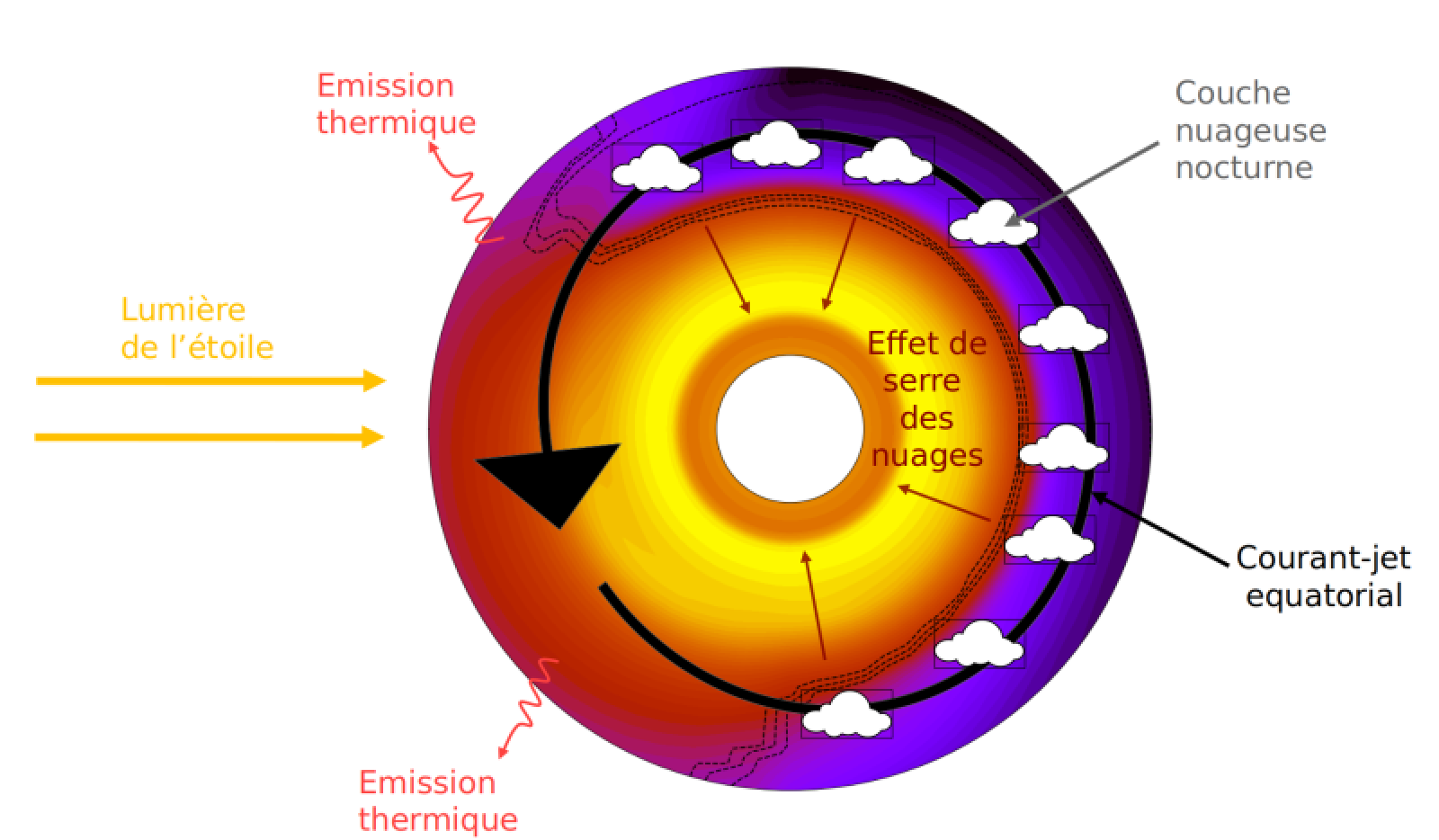Follow us on Google News (click on ☆)
A characteristic of these short orbital period planets (a few days) that are strongly irradiated is that they always show the same face to their star (like the Moon around the Earth). This leads to a very strong thermal contrast between the permanent day side (between 1800-3300°F) and the permanent night side (between 900-2400°F).

Illustration of the atmospheric circulation and thermal structure of WASP-43 b modeled using the Generic PCM. The color gradient represents the spatial evolution of temperature, from the hottest day side (yellow-red) to the coldest temperatures of the permanent night side (purple).
© Lucas Teinturier
In addition to the observations made by the JWST, a French team, including scientists from CNRS Earth & Universe (see box), developed a Global Climate Model (GCM), a three-dimensional numerical model for simulating planetary atmospheres that is rooted in the study of the Earth's climate, in order to interpret the observations and understand the physical, dynamical, and chemical processes controlling these exotic atmospheres.
In particular, the scientific team focused on the question of clouds that may exist on the night side of these planets, their impact on the thermal and dynamical structure of the atmosphere, as well as their effects on observations.
The study focuses on a Hot Jupiter, WASP-43 b, recently observed with the JWST's MIRI-LRS low-resolution spectrometer in the mid-infrared. Numerical simulations show that clouds naturally form on the night side of the planet and have a greenhouse warming effect on the atmosphere. Furthermore, the clouds modify atmospheric circulation, particularly reducing wind speeds.
The comparison to observations confirms the presence of clouds on the night side of the planet but not on the day side. For the temperature conditions of WASP-43 b, these clouds should be composed of rock particles, but their composition is not yet clearly identified.
Thermal emission maps (left) and cloud distribution (right) from a modeling of WASP-43 b using the Generic PCM. The day side represents a peak in thermal emission (in yellow-beige) and a total absence of clouds, and the night side a minimum of thermal emission (purple-black, on the left) due to maximum cloud opacity (gray-black, on the right).
Reference:
Teinturier et al., The radiative and dynamical impact of clouds in the atmosphere of the hot Jupiter WASP-43 b, A&A, 2024.